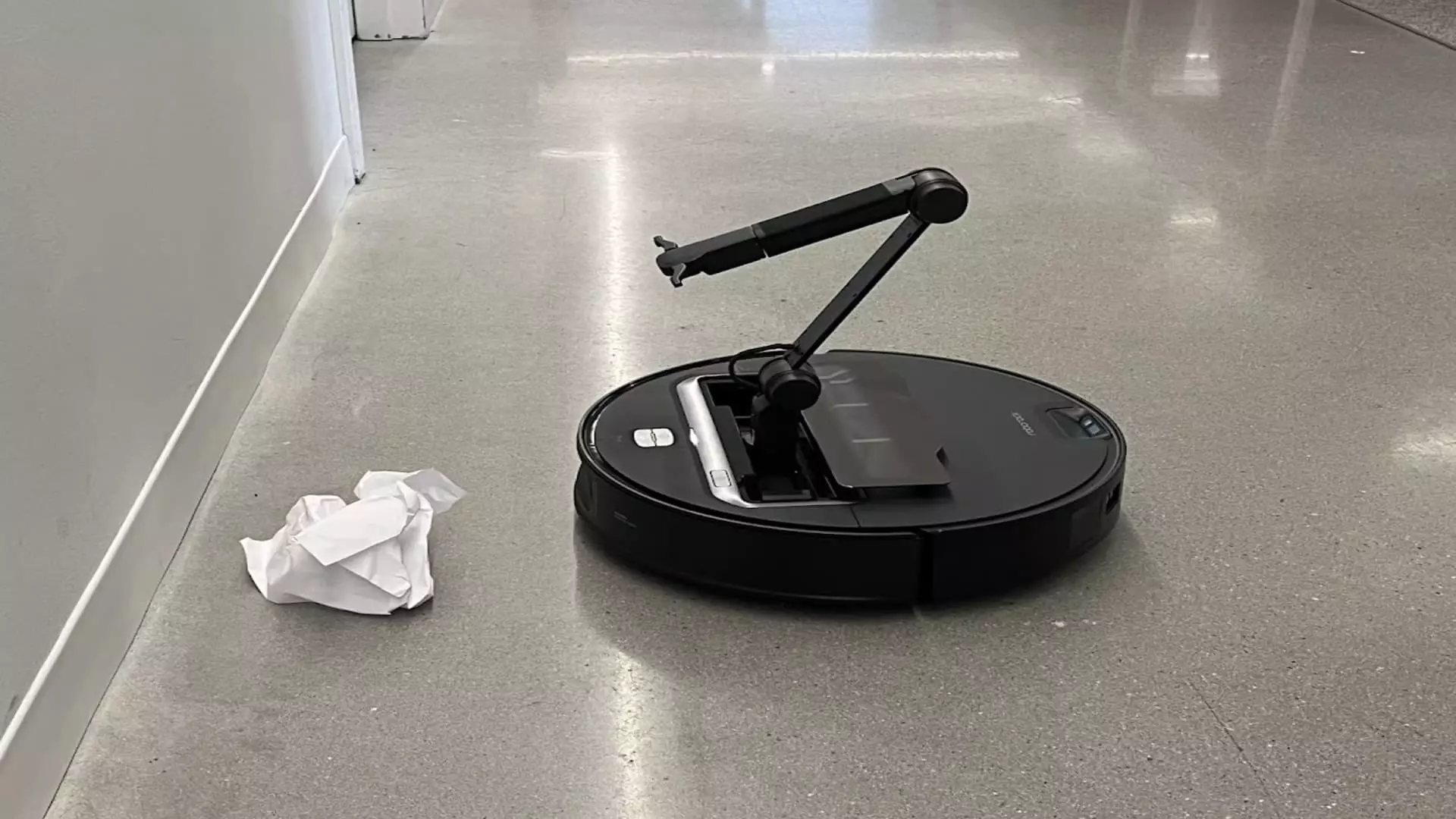In an era defined by rapid technological advancements, the introduction of new home appliances, particularly robot vacuum cleaners, is reshaping the cleaning landscape. Chinese robotics manufacturer Roborock has made headlines with the launch of its latest model, the Saros Z70, which boasts an innovative artificial intelligence-driven folding arm designed for obstacle removal. This development signals a turning point in the functionality and integration of robotics within our daily lives, potentially positioning robot vacuums alongside essential appliances like washing machines.
Roborock’s President, Quan Gang, shared his vision during a recent interview, stating his conviction that the advancements in artificial intelligence will be pivotal in driving the mass adoption of these futuristic cleaning devices. The notable increase in AI applications within household technology may make robotic vacuums a commonplace sight within just a few years. This optimism stems from the brand’s commitment to evolving existing functionalities, enhancing user experience, and ultimately making life easier for consumers around the world.
The Saros Z70 stands out not just for its ability to navigate typical household debris but for its smart integration of AI that allows it to identify and remove specific obstacles such as socks, towels, and sandals weighing up to 300 grams. The increased detection capabilities represent a significant leap forward in the evolution of robot vacuums, giving consumers greater confidence in the reliability and independence of their cleaning devices.
Scheduled for release in major global markets in the first half of the year, the pricing has yet to be disclosed, leaving potential buyers eager yet apprehensive about the investment. Given the previous models‘ price points, consumers are left to speculate on whether the innovation justifies a possibly higher cost. As the competition heats up in the robot vacuum market, it becomes crucial for Roborock to effectively position itself against established names such as iRobot and emerging challengers.
Roborock isn’t the only player in this arena. The inception of the Roomba in 2002 by iRobot catalyzed the development of not only standalone vacuum robots but an entire segment of automated home cleaning systems. Indeed, a variety of companies have surfaced, many of which are also based in China, contributing to the economic and technological dynamism in this sector. For instance, models like the Ecovacs Deebot T30S Combo and iRobot’s Roomba Combo J7 Plus have both received accolades for their innovative features and performance. Their competitive prices vary widely, appealing to different consumer segments.
Despite this fierce competition, Roborock has found recognition for its robust models, with The Verge and Wired praising various offerings as among the best in the market. The S8 MaxV Ultra, priced at an impressive $1,799.99, is hailed for its comprehensive features, which include automatic bin emptying and mop tank refilling—a convenience that appeals to consumers seeking a truly hands-free experience.
While Roborock is firmly planted in key markets such as the United States, Germany, and South Korea, market penetration remains low, especially in developing countries where adoption rates hover in the single digits. Quan identifies this as both a challenge and an opportunity for expansion. Increased AI integration promises to enhance ease of use and accessibility, potentially driving higher adoption rates among consumers eager for automation in their homes.
In 2024, Roborock observed a 23.2% rise in operating revenue over the first three quarters, reflecting a growing interest in robotic cleaning technology. As competition from other firms stiffens, continuing innovation will be imperative. Roborock has invested 9.1% of its operating revenue into research and development—an upward trend that underlines its dedication to pushing boundaries in AI and robotics.
As Roborock and other companies continue to harness AI to advance their robot vacuums, the future appears bright for this segment of household technology. However, the path isn’t without obstacles, primarily in the form of finding qualified talent. Increasing the number of researchers focused on AI and robotics will be crucial for sustaining growth and innovation.
As the company prepares for an ambitious year ahead, including updates to other household appliances like washing machines, it remains essential for them to not only keep pace with technological advancements but stay ahead of evolving consumer expectations. The journey from novelty to necessity for these robot vacuums could well become a defining narrative in the ongoing saga of smart home technology, marking a significant lifestyle shift for households worldwide.

